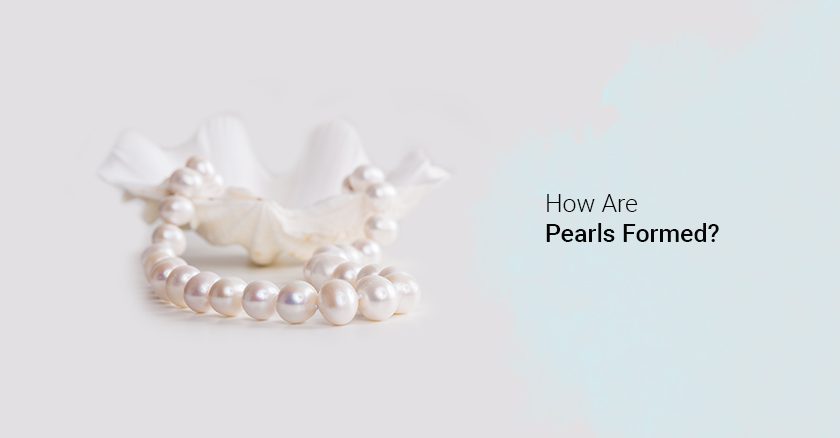Natural pearls are almost extinct. The demand for this gem was such that most natural beds of pearl-bearing oysters were depleted due to over-harvesting done back in the 18th and 19th centuries. Pearl-producing species of mollusks were hunted down to almost complete elimination. However the demand continued, but the scarcity remained. Thus the concept of pearl farming was born in the 20th century.
Here’s how different varieties of cultured pearls are formed…
1. Freshwater Pearls
They are born within freshwater mussels, belonging to the Unionidae family. All freshwater pearls used in the jewellery industry today are produced in pearl farms.
How are they formed?
The main mussel species responsible for creating freshwater pearls are Hyriopsis cumingi (triangle shell) and Hyriopsis schlegeli (Biwa shell). Several tiny pieces of mantle tissue are surgically implanted within them. As a response to the intruding irritant, the mollusks begin the creation of a sac. This is essentially the secretion of layers of nacre around the tissue which generally lasts between 2 to 7 years. In the end, it results in more than two dozen pearls.
2. Akoya Pearls
Unlike freshwater pearls that are created by mussels, the Akoya pearl is born within an oyster. To be more specific, it is a bead-nucleated cultured pearl that is produced by the Pinctada fucata martensii, a.k.a the Akoya oyster.
How are they formed?
The gonad (reproductive organ) of the Akoya oyster is surgically implanted with a nucleus bead, which is usually a polished shell material obtained from freshwater mussels. A small piece of mantle tissue from another mollusk (donor shell) is also included in the process. This combination helps initiate the pearl sac formation within the oyster, which is followed by the secretion of nacre around it. The oyster is then returned to the water for a growth period ranging between a year to 18 months. By the time harvest season arrives, one pearl Akoya pearl can be found within the oyster.
3. South Sea Pearls
Pinctada maxima, a marine bivalve mollusk belonging to the Pteriidae family of oysters is responsible for South Sea pearls. It is also commonly known as the South Sea oyster.
How are they formed?
Similar to the harvesting process of the Akoya pearl, this intricate method involves the surgical plantation of a perfectly round bead nucleus. It is safely inserted into the gonad of the oyster. A tiny piece of mantle tissue, measuring approximately 1.0mm, from a different donor oyster is also included. Post the surgical incision, the oyster is given time to heal and is sent back to its natural environment. During this period of two years, thick layers of nacre are deposited around the nucleus, which results in the birth of a beautiful South Sea pearl.
4. Tahitian Pearls
This extremely beautiful and rare variety of pearl is created by Pinctada margaritifera, commonly known as the black-lipped pearl oyster.
How are they formed?
The process of nucleation done here is similar to the ones mentioned above. It involves implanting a bead made from a mollusk shell, along with a piece of mantle tissue, into the gonad of the black-lipped pearl oyster. This particular piece is sanded and rounded to help the oyster create rounder pearls. Post successful grafting, the oysters are returned to the lagoons for a year and a half. Post this, fully developed Tahitian pearls are gently extracted.
Parting Note:
So, now that you have taken a look at the arduous journey your pearls took to come into existence, we are sure you love your custom pearl jewellery more than ever. No matter whether a pearl is cultured inside a mollusk or its formation is initiated by mother nature herself, every resultant jewel is a piece of divine art.
Also Read – Natural vs. Cultured Pearls




























